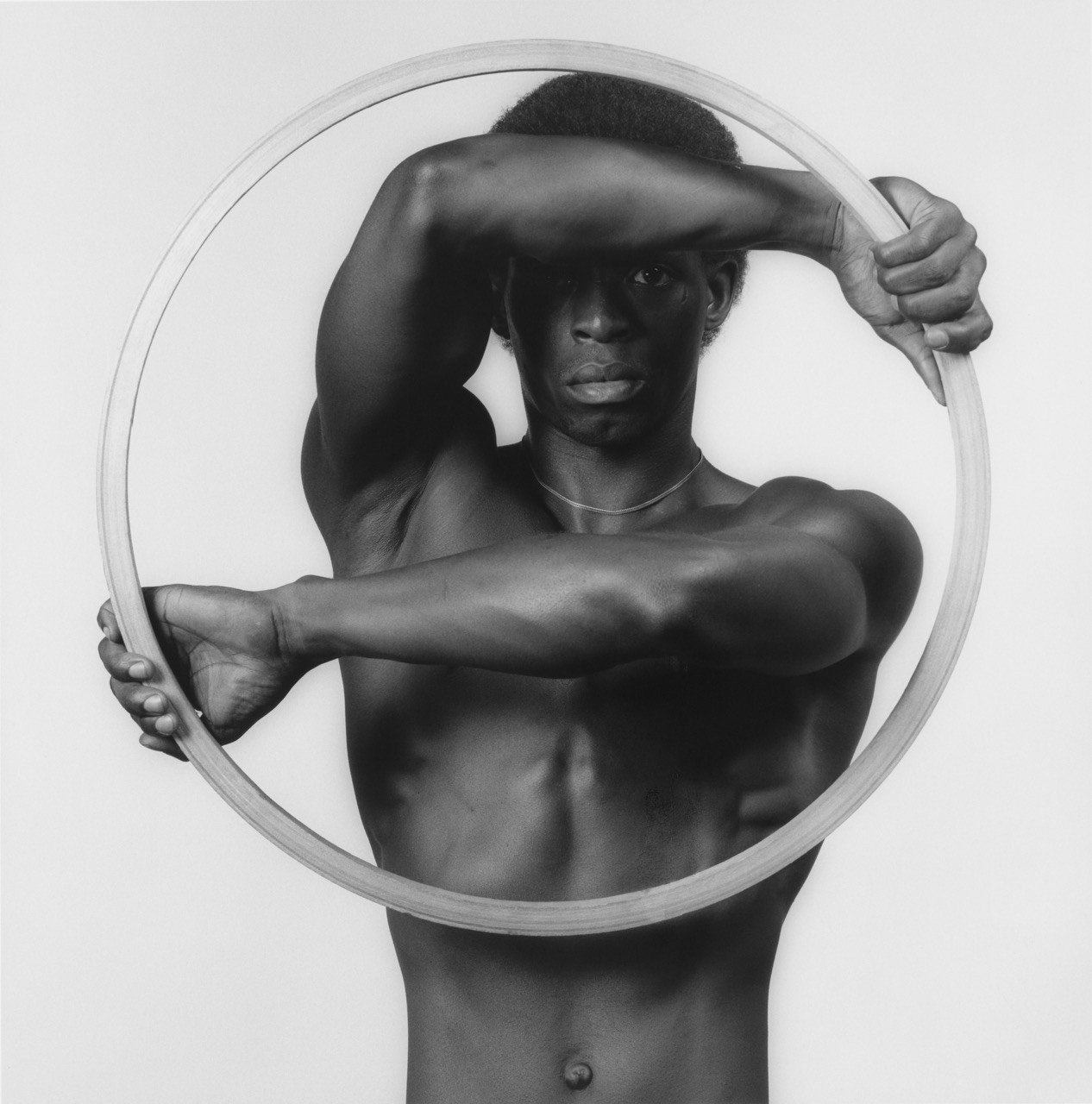DENNIS SPEIGHT | ROBERT MAPPLETHORPE
The representation of the body—and particularly the nude—is Robert Mapplethorpe’s stylistic hallmark. This choice, almost an artistic device, reflects his approach to photography as a sculptural practice. Poses, colors, lighting, subjects, shadows… every element contributes to highlighting, defining, and emphasizing the volumes and contours of the human form. This focus on the plastic qualities of the body creates a dialogue between Mapplethorpe’s photography and classical statuary. His dynamic yet natural poses recall the study of weight distribution pioneered by Praxiteles, who, with his Hermes and Dionysus, overcame the rigidity of the Polykleitan canon.
However, for Mapplethorpe, the nude is never merely an aesthetic exercise; it is also a means of inquiry, exploration, and at times, provocation. Through the depiction of nudity, the artist delves into profound themes such as sensuality, desire, and identity. His subjects present themselves in poses that may feel uncomfortable, challenging the viewer’s prejudices and cognitive biases. Any discomfort we experience while viewing these images mirrors our own difficulty in accepting the human body—ours or others’—in its full truth. How do we look at a nude? What cultural and mental filters shape our perception? These questions prompt a reflection on our interpretative limitations and invite us to examine their origins.
The portrait Dennis Speight is a male nude composed with strict formal balance, centered on the subject’s biographical identity—his African-American heritage. The masterfully executed black-and-white tones evoke the bronze sculptures of antiquity, while also conveying a sense of contemporary dynamism that transcends the stillness of the pose. The movement of the arms, intertwining in a swirling gesture to form a circle, disrupts the image’s equilibrium and injects it with energy. This circle, framing the subject’s face and torso, becomes a kind of abstract medallion, a nod to classical portraiture and a declaration of intent—a method that, in effect, constructs new standards for portraiture.
Robert Mapplethorpe’s work stands as a contemporary photographic sculpture—though no marble has been carved, nor bronze cast. The camera lens becomes the sculptor’s chisel, and the human body itself the material to be shaped. In this convergence of photography and sculpture, of provocation and classicism, lies the extraordinary power and expressive force of his art.
The work is featured in the exhibition Robert Mapplethorpe. Le forme del classico hosted by Le Stanze della Fotografia in Venice and curated by Denis Curti. The show is part of a trilogy of retrospectives dedicated to the artist, running concurrently in Milan at Palazzo Reale Robert Mapplethorpe. Le forme del desiderio and in Rome at the Museo dell’Ara Pacis Robert Mapplethorpe. Le forme della bellezza. The exhibition is accompanied by a catalog published by Marsilio Arte, featuring texts by Michael Ward Stout, Alberto Salvatori, and Denis Curti.
Robert Mapplethorpe
Robert Mapplethorpe. Le forme del classico
Le stanze della Fotografia, Venezia
Until January 6, 2026
Le Stanze della Fotografia
Image: Robert Mapplethorpe, Dennis Speight, 1983.
©Robert Mapplethorpe Foundation. Used by permission.
14/05/25

